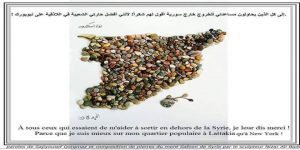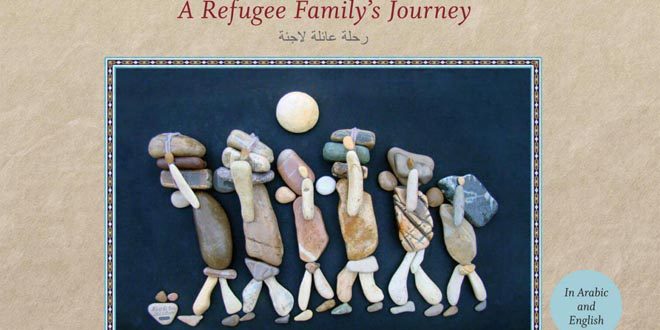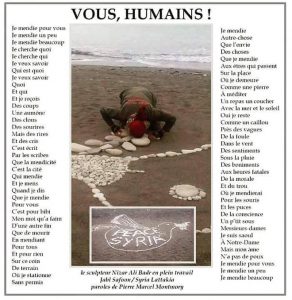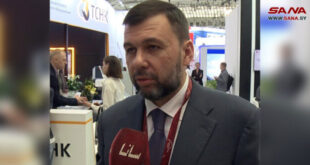Damascus, SANA – The Syrian international sculptor Nizar Ali Badr has been nominated by the Rocky Mountain Foundation in Canada to its annual prize along with the Canadian writer Margriet Ruurs for their book “Stepping Stones” as it is one of the top five books sold in 2016 in Canada.
“Stepping Stones” unique picture book was inspired by the stone artwork of Syrian artist Badr, discovered by chance by the Canadian children’s writer Ruurs. The author was immediately impressed by the strong narrative quality of Mr. Badr’s work, and, using many of Mr. Badr’s already-created pieces, she set out to create a story about the Syrian refugee crisis.
“Stepping Stones” tells the story of Rama and her family, who are forced to flee their once-peaceful village to escape the ravages of the terrorist war raging ever closer to their home. With only what they can carry on their backs, Rama and her mother, father, grandfather and brother, Sami, set out to walk to Canada, where they meet a Canadian family who take care of them and try to help them restore normal life.Badr’s stunning stone images illustrate the story.
The book, which is available in English and Arabic, has been translated into French and German, and is currently being translated into Japanese.

It’s worth to note that the Syrian artist Badr used small stones from the Mount of Safon in Syria’s Lattakia.
Speaking to SANA, Badr affirmed that during the last seven years he sought through his work to deliver a humanitarian message from Syria to the world that confirms that Syria will not die and will remain a symbol of heritage and history.
In a similar statement, journalist Sagia Karkamaz, Badr’s business manager in Europe, revealed that an exhibition of a collection of 30 works by the international artist Badr will be held in Paris on June 14, organized by Syria Art International Foundation.
The Syrian international sculptor Badr is from the city of Lattakia and has acquired the nickname of Safon Mount as he uses the mount’s stones to produce his pieces of art, through which he seeks to convey human messages about his homeland Syria.
Badr has so far been able to form more than 25,000 works of art, some of which he documented using photography for archiving, having formed a technical school depicting life in Syria during the crisis.
 Syrian Arab News Agency S A N A
Syrian Arab News Agency S A N A



